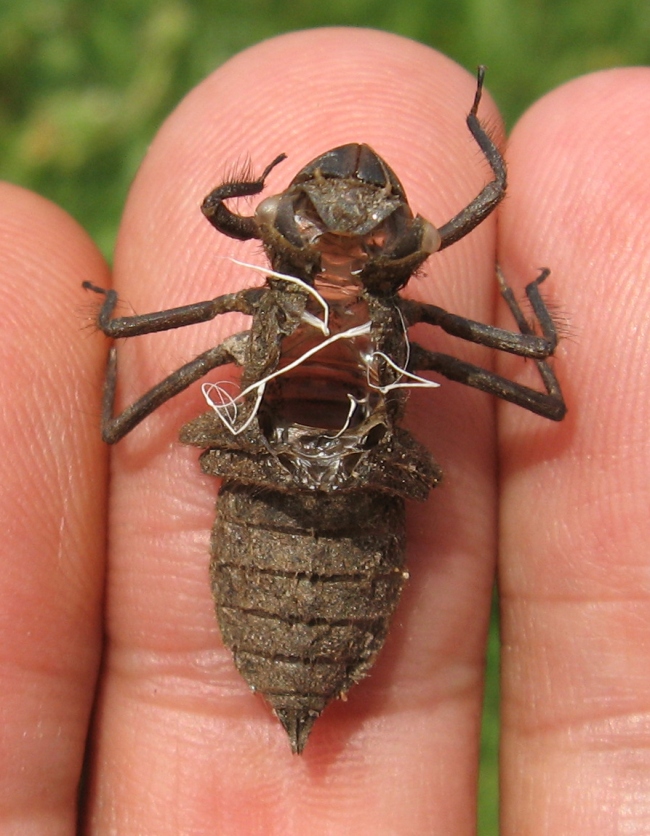Tweed, Ontario, about ½ km west of town, a marsh bordering the trans-Canada Trail:
typical local marsh with Cattails, sedges and other emergent vegetation, various small willows, alders, dogwoods and some Tamarack.
The naiad was found about fifteen feet from the water;
it was moved to a garden to complete its metamorphosis (May 23, 2011).
|
|
10:50 to 10:54 AM ... Four-spotted Skimmer (Libellula quadrimaculata) naiad perching on a branch.
The exoskeleton has been heaving and expanding as the adult dragonfly struggles to break out.
|
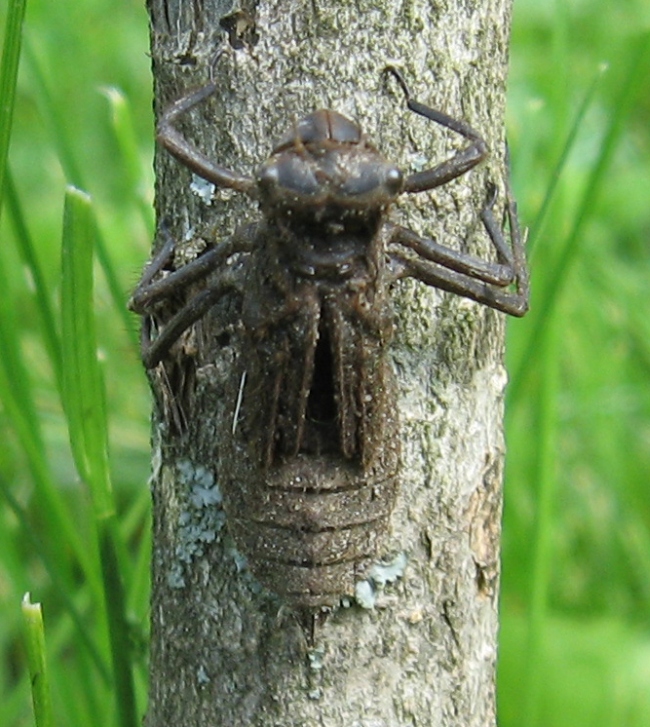
|
10:59 AM ... the outer integument has opened at the thorax; the eyes begin to show a few seconds later.
|
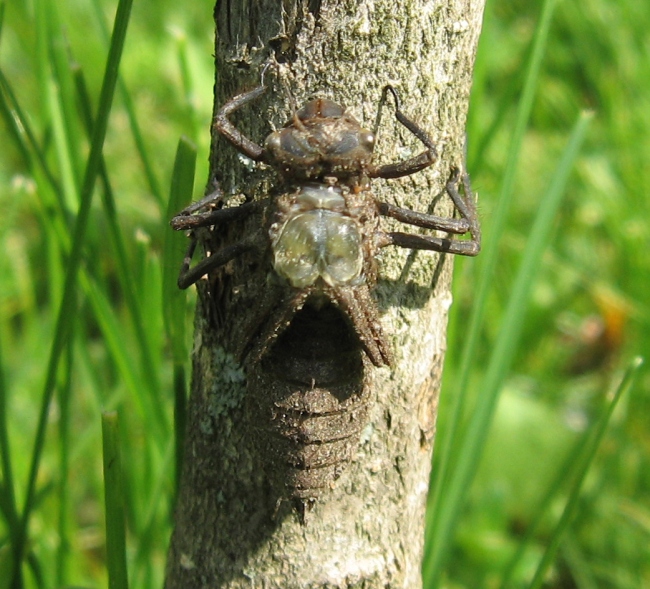
|
11:00 AM ... the eyes have emerged and more of the thorax is now free of the larval skin.
|
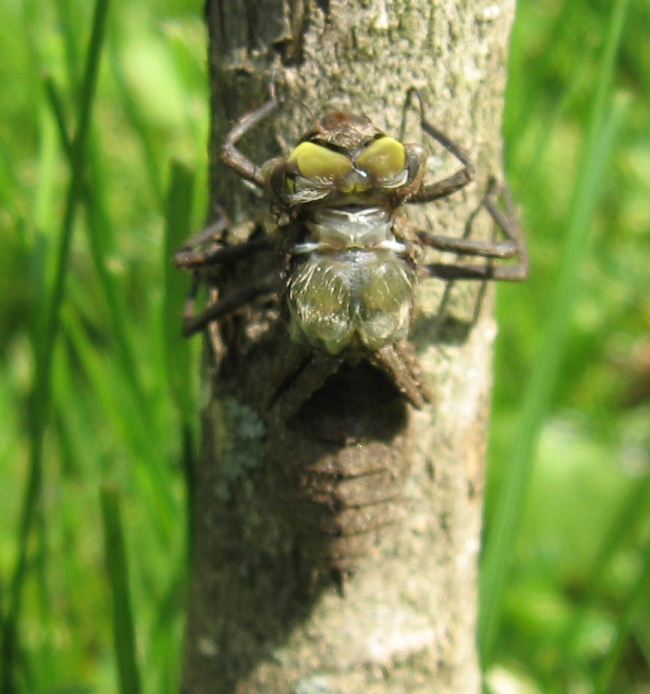
|
11:01 AM to 11:02 AM ... events are moving fast as the teneral adult begins to pull itself out.
|
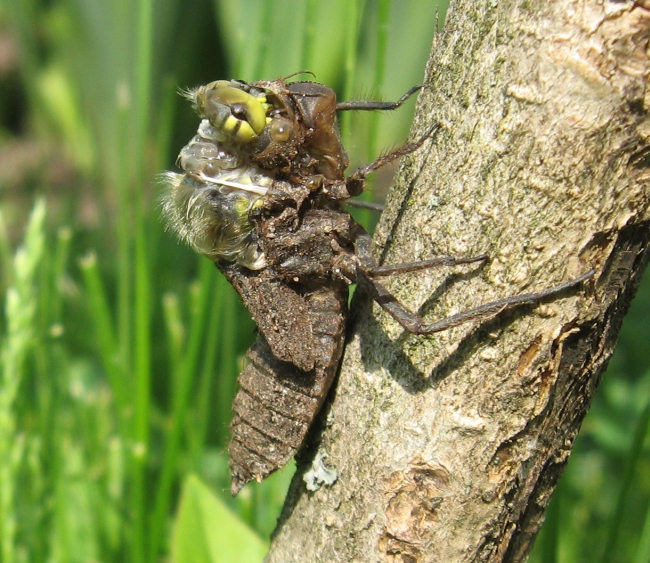
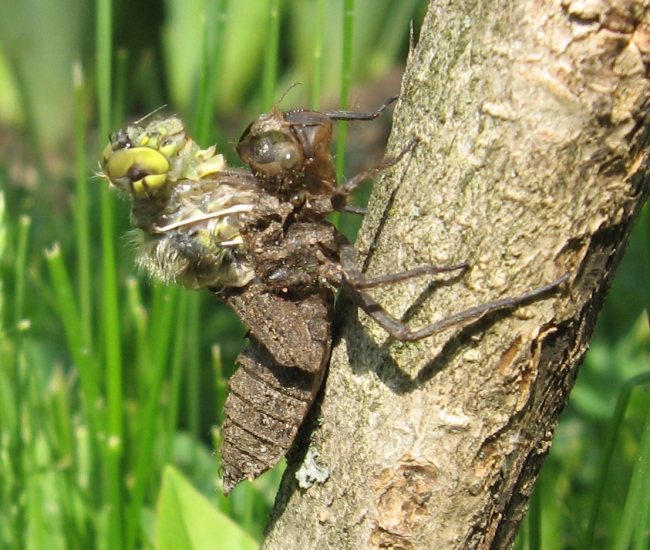
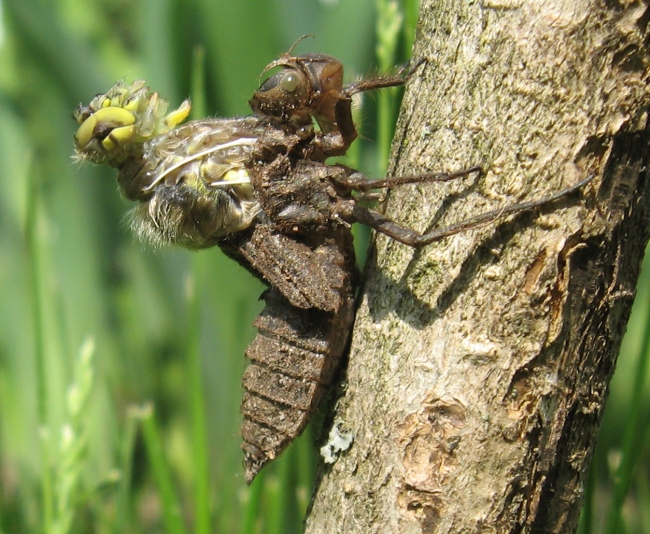
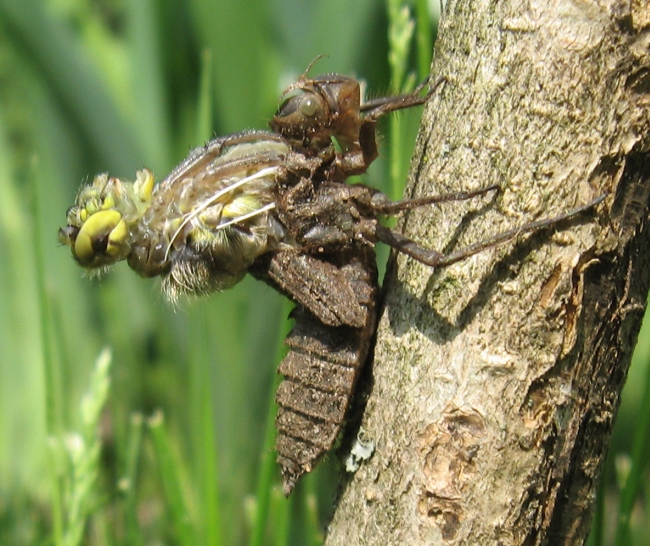
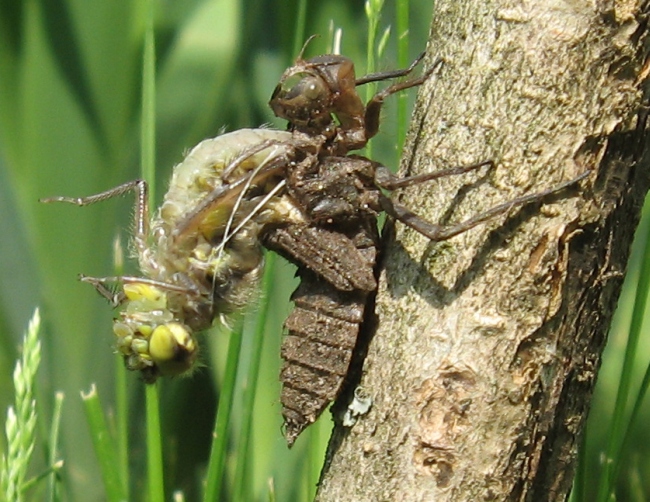
|
11:05 AM ... a ventral view of the dragonfly hanging head down, with only the end of its abdomen remaining inside the exoskeleton.
|
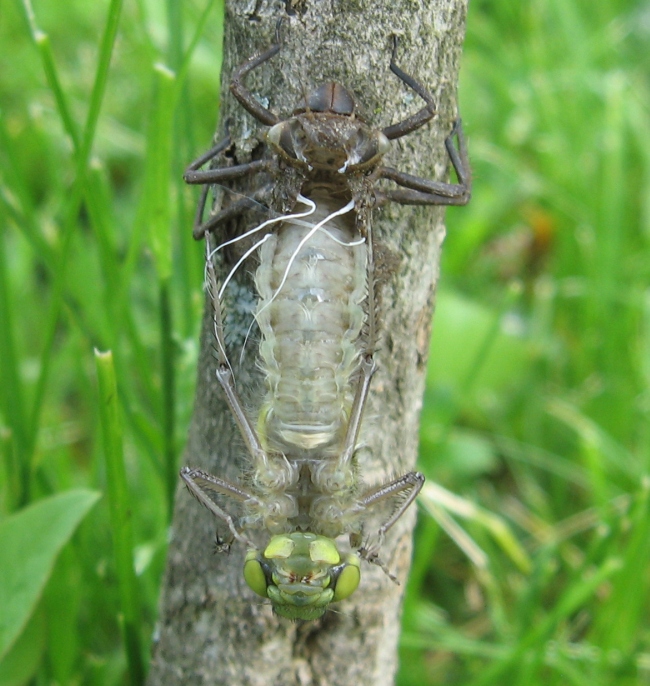
|
11:14 AM to 11:16 AM ... the insect tries to heave itself into an upright position.
Imagine trying to do situps while hanging head down! Eventually it succeeds and follows suit by pulling its abdomen free of the larval skin as well.
With the abdomen visible we can see that this is a female.
|
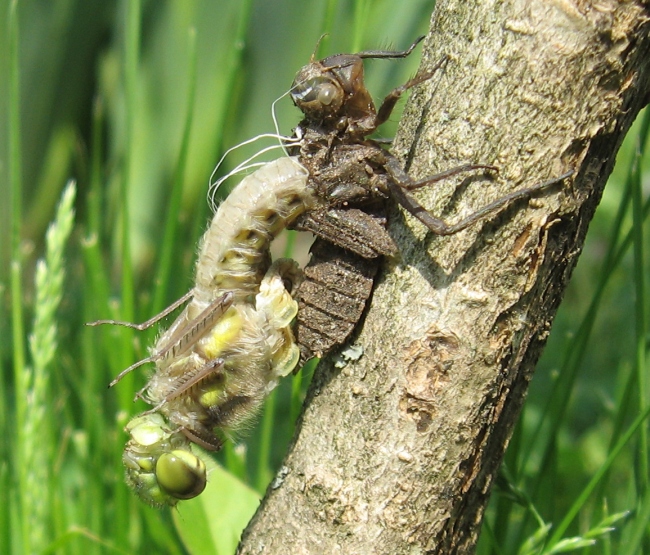
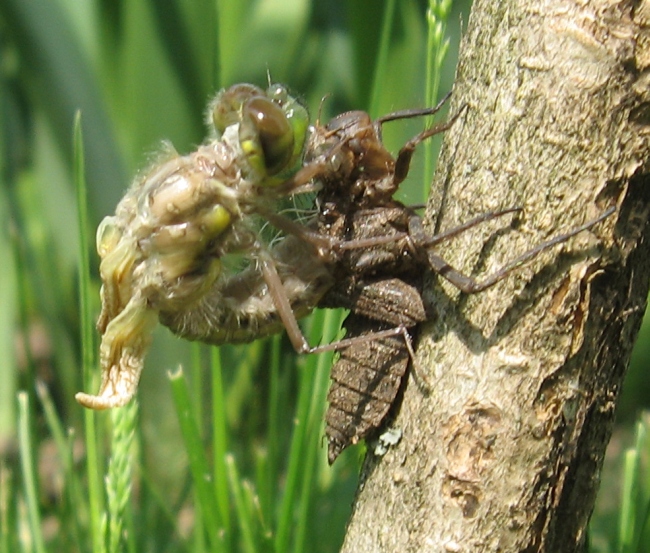
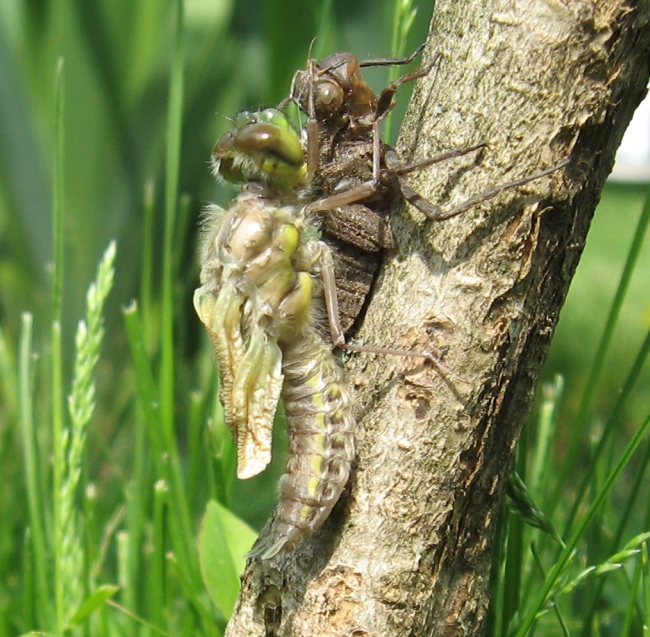
|
11:22 AM to 11:23 AM ... the wings have been expanding as haemolymph (insect circulatory fluid) flows into them,
and the abdomen continues to lengthen as well.
|
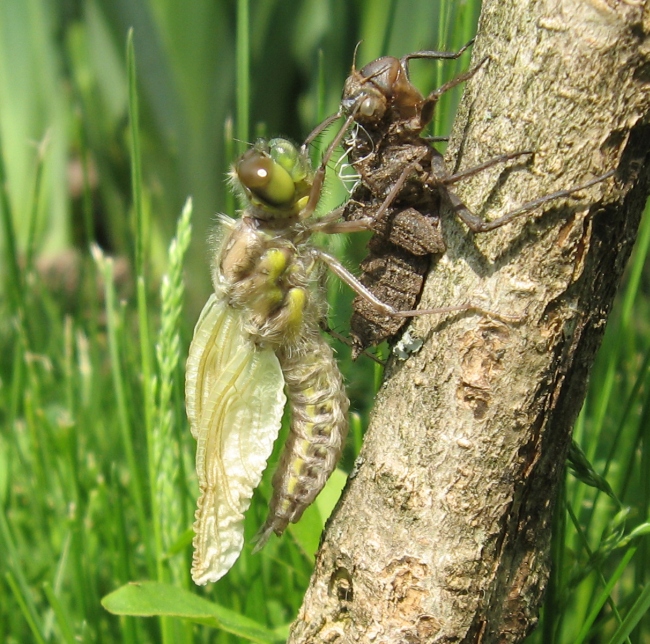
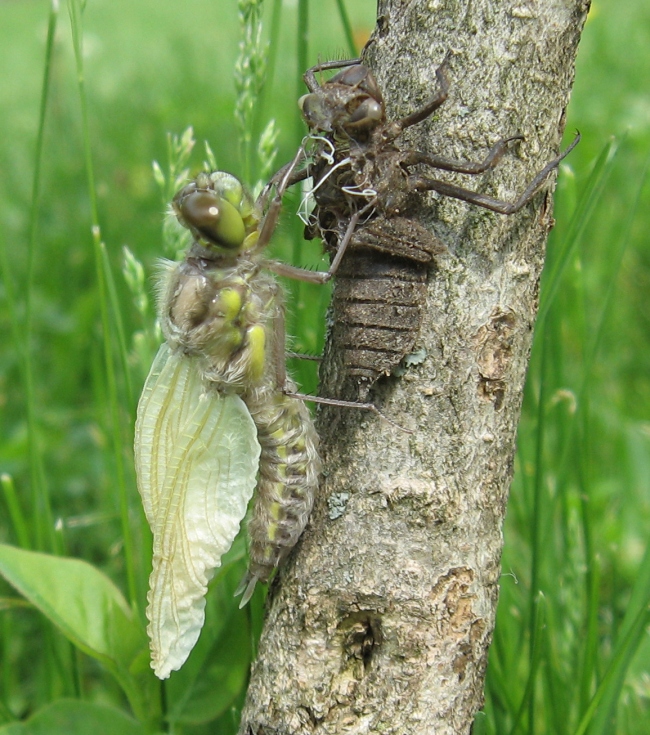
|
11:26 AM ... the teneral adult climbs up the branch, leaving the cast-off larval skin (exuviae) behind.
|
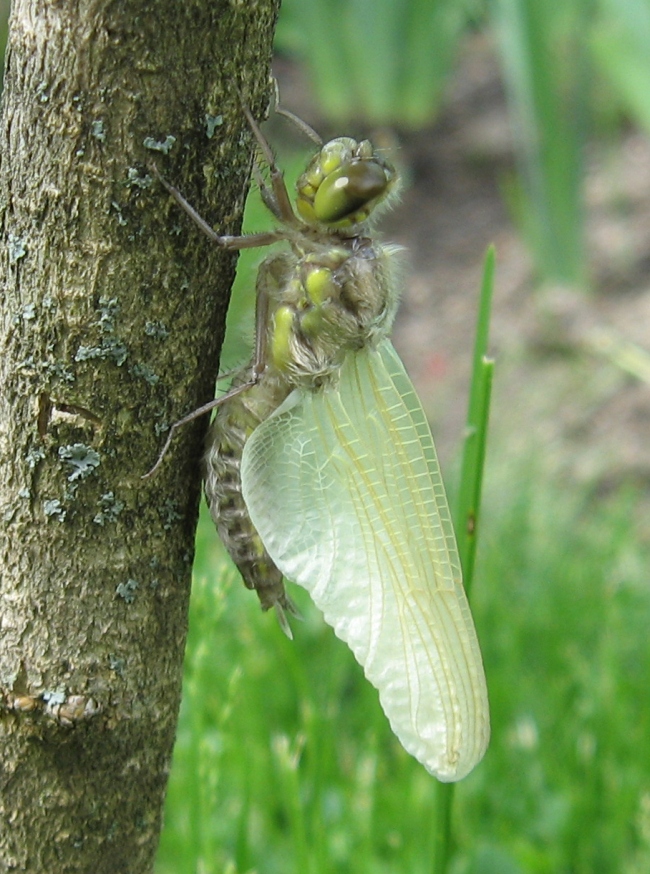
|
11:27 AM ... the wings and exoskeleton are still very soft – especially the wings,
which are so limp that they blow like a flags in the breeze.
|
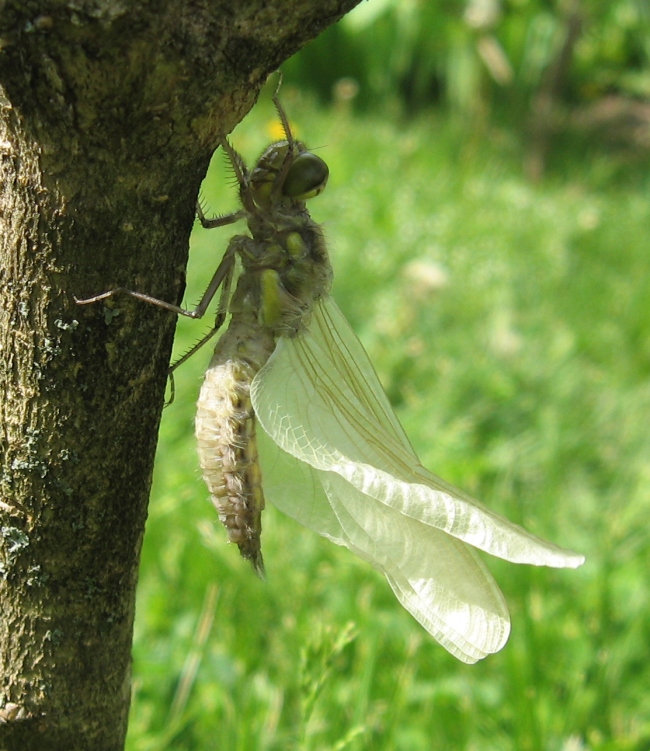
|
11:56 AM ... the body is beginning to assume a more adult profile.
Although the wings are still folded together over the dragonfly's body,
they are now more rigid and almost clear and colorless, and the abdomen is much straighter.
|
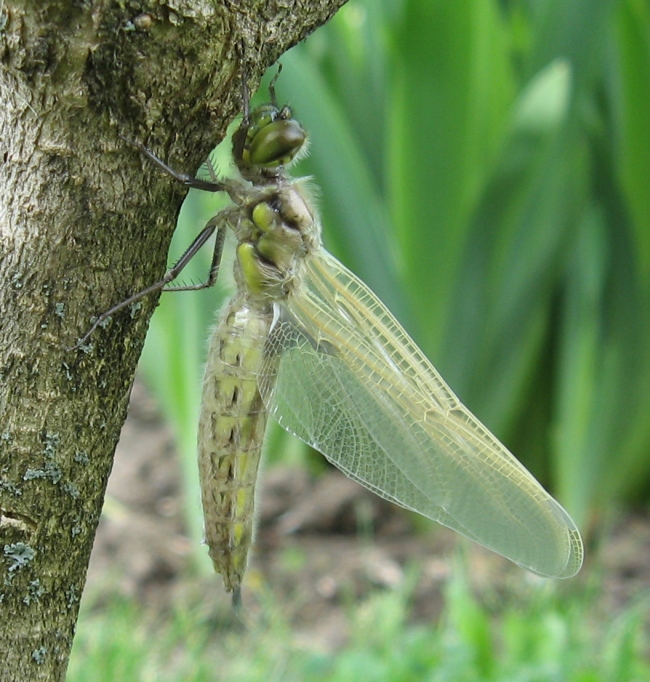
|
12:15 AM ... the wing's first tentative flutters ...
|
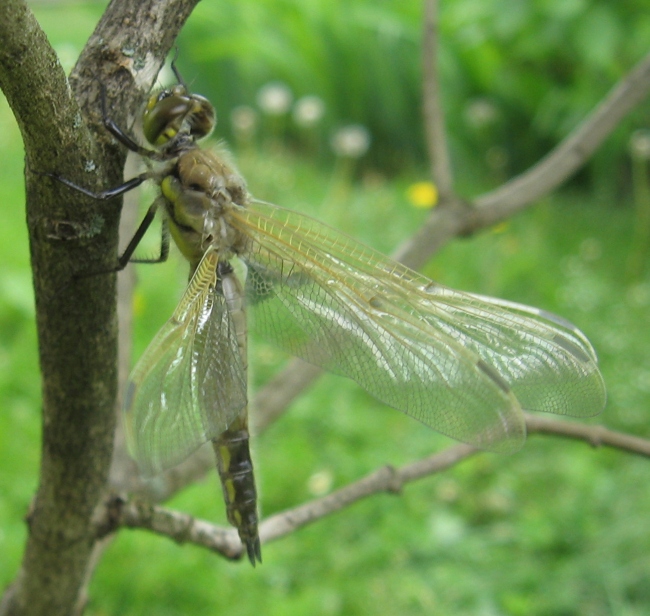
|
... and a minute later at 12:16 AM the wings are held horizontally.
Note the luster of the wings typical of teneral odonates (almost like plastic wrap).
At 12:21 AM the dragonfly was capable of weak flight.
|
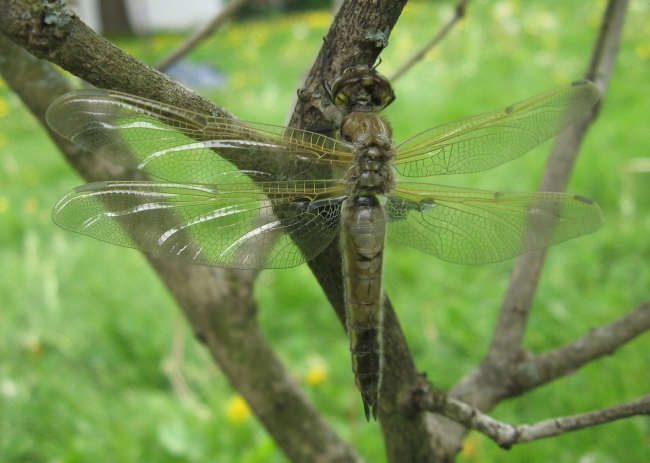
|
The time spanned by this sequence of images is one hour and twenty-seven minutes.
The naiad was about 20 mm long, the length of the adult is about 40 mm.
It's hard to believe they are one and the same insect, and all that remains of our brief encounter is this digital record of the transformation and a little souvenier ...
|
